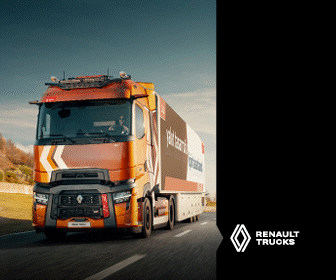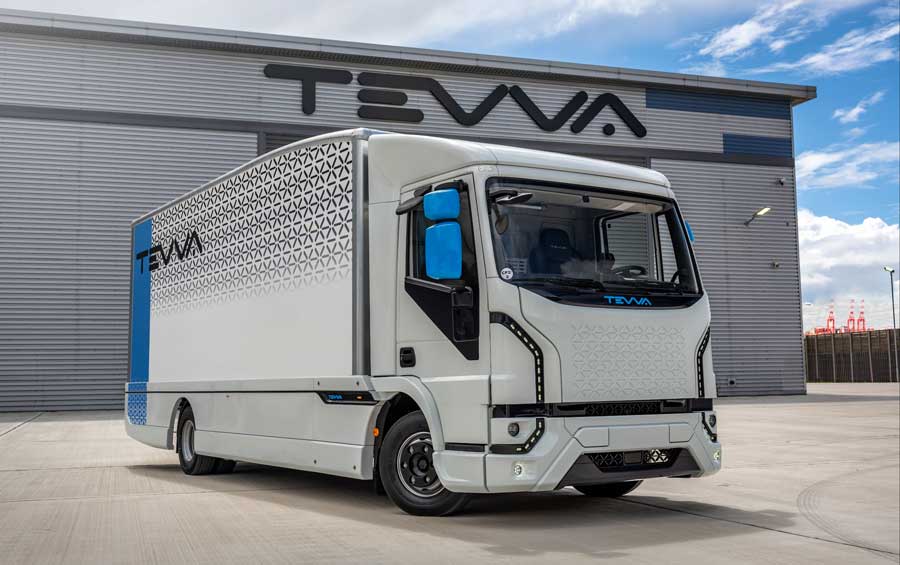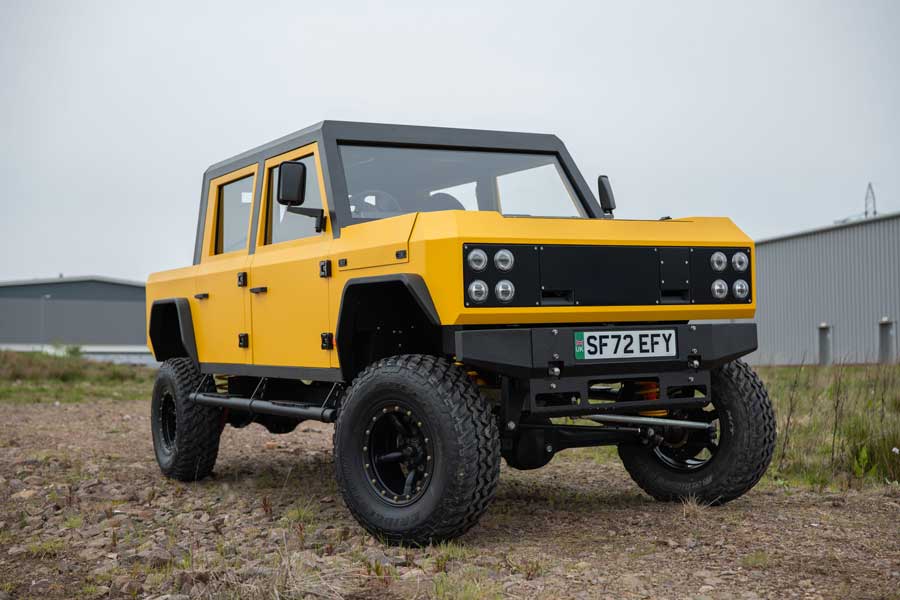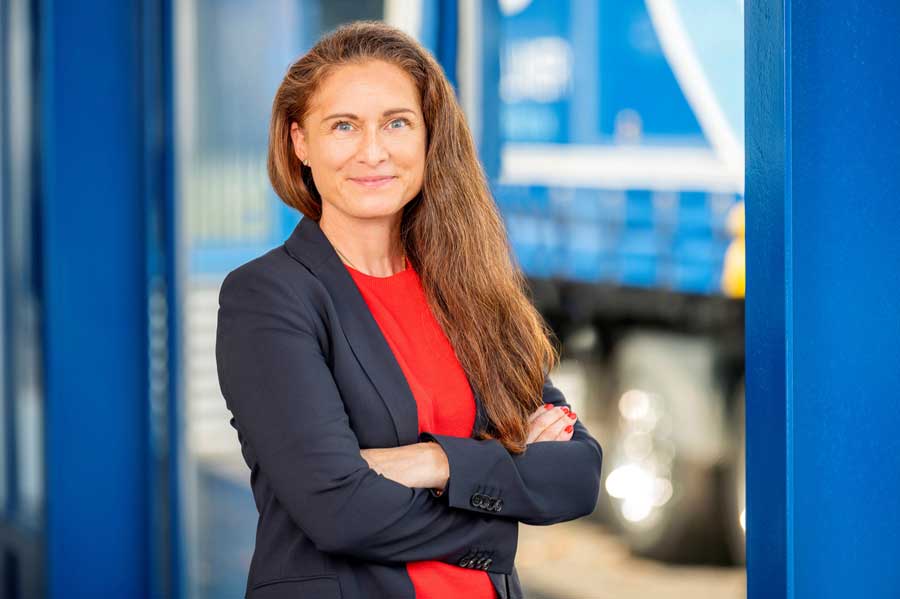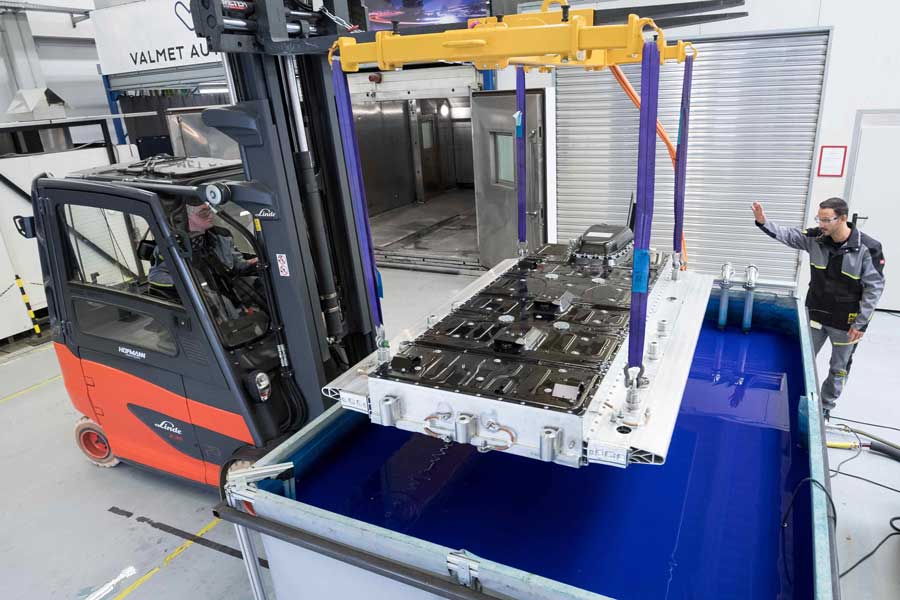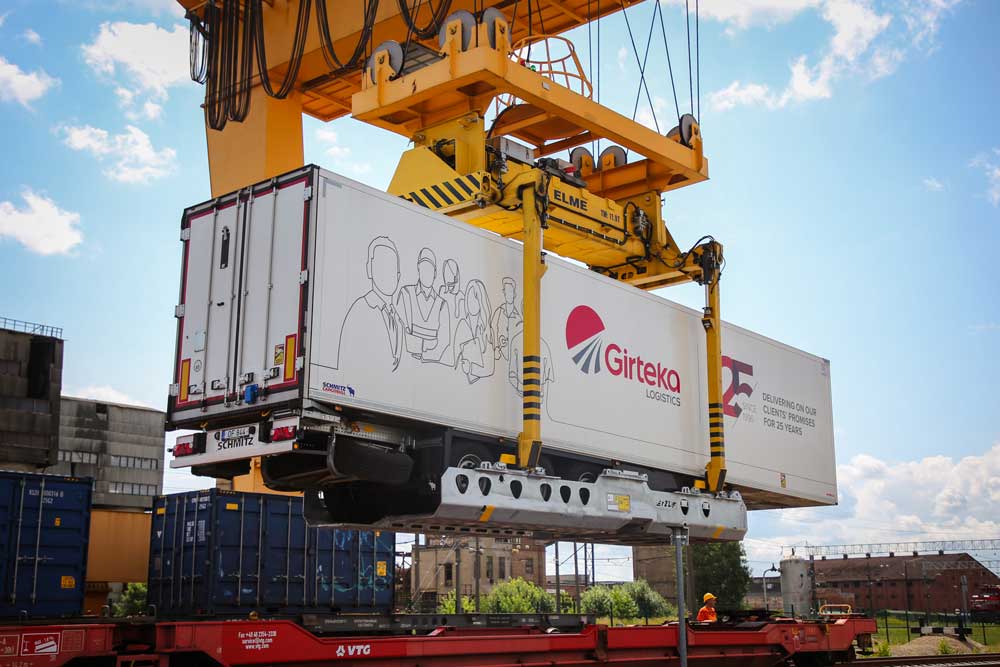As the lawmakers in the European Union (EU), as well as governments outside the EU, set more stringent emissions targets and as users are warier regarding the impact on the environment that their consumed products have, logistics is also at the forefront of the pressure to reduce its emissions. Furthermore, as major brands also feel the pressure, they aim to become more sustainable and try to reduce their emissions by taking a deeper look throughout their production process, including their supply chains.
There are a plethora of reasons for the road transport industry to look at the options that are or will be available at hand to carry goods to end-consumers in an environmentally friendly manner. While road cars are increasingly warming up to the idea of electricity powering their wheels, it has largely rejected the idea of hydrogen power as car manufacturers began to slowly move away from the idea that water coming out of the exhaust pipes of an SUV will become a reality. As a result, electricity seemingly became a one-size-fits-all option.
Could that scenario repeat when talking about sustainable options for heavy goods vehicles (HGV) or are there plenty of other variants for the road transport industry to decarbonize in the future?
Glove full of electric trucks?
While electricity fit regular cars like a glove and are set to slowly take over and phase out its polluting brothers from another mother, namely petrol and diesel cars, is electricity the only solution for long-haul trucking?
Major truck manufacturers have come out with electric truck models, from the trailblazer Tesla with its Semi, to the ambitious Nikola, which presented its two semi-truck models, the Tre Battery-Electric Vehicle (BEV), Tre Fuell-Cell Electric Vehicle (FCEV), and the Two FCEV. “Traditional” manufacturers, like DAF, MAN, Mercedes-Benz, Scania, Volvo, etc. have all come out with their own electric vehicles, some of which are already on the road. However, these trucks are lighter than those typically found carrying goods on international and long domestic lanes – case in point, the Mercedes-Benz eActros or the Volvo FL or Volvo FE electric trucks, all three of which are designated as medium-duty trucks.
While the manufacturers’ claimed distance that electric medium or heavy-duty trucks can cover in one charge fluctuates, the average is around 260 kilometers, according to publicly available specifications.
Per Eurostat, the average distance of journeys performed in international road freight was 581 kilometers within the European Union in 2018, meaning the average distance that even the Volvo FH Electric, which the manufacturer described as the right choice for city-to-city transport, comes up short. The FH Electric is yet to be released into the market.
Perhaps Mercedes-Benz hit the nail on the head, as the manufacturer concluded that “as a rule of thumb: the lighter the load and the shorter the distance, the more battery-electric operations are favored. The heavier the load and the longer the distance, the more likely the fuel cell is the means of choice,” read the maker’s eMobility page. Still, Tesla’s Elon Musk was highly skeptical that anything but electricity would power semi-trucks in the coming years, as he once stated that hydrogen’s “success is simply not possible.”
The US-based electric car manufacturer’s truck promises to have a range of either 300 miles (482 kilometers) or 500 miles (804 kilometers), depending on the user’s choice of battery capacity upon purchase, exceeding the average distance of journeys performed in international road freight within the EU.
So far, electric trucks had little real-life condition testing compared to their Internal Combustion Engine (ICE) counterparts.
According to a study conducted by several scholars from the Norwegian Institute of Transport Economics, a country where the government has set very stringent emissions targets, while the experiences from several trials were deemed as “promising,” they exhibited their shortfalls.
The study, published in 2019, highlighted that “although operators are positive about working conditions, energy savings and lower operating and maintenance costs, they have generally had to perform considerable tailoring of route/location choices,” as well as other “number of issues.” Furthermore, the study noted that the experience of operating these vehicles in colder periods has been limited, which “could bring to light additional challenges.”
While the authors see the potential for full-electric application on certain segments, particularly where the route has little variation, “providing suitable conditions to install charging stations near the loading and unloading locations,” that does limit the flexibility of operations for logistics companies.
Gloom or excitement for hydrogen?
If electrifying a fleet of trucks or even replacing your family car brings its set of challenges, hydrogen takes the casual headache and makes it a constant migraine. The fact that the gas has to be compressed under very high pressure, namely 700 bar and kept at an extremely cold temperature of minus 253 °C, only exacerbates the infrastructure problems both fuels currently have.
“Hydrogen is not currently considered a solution for large-scale transport of high payloads. But since legislation will require 20% of our production to be emission-free by 2030, hydrogen will play an important future role in the transportation industry,” indicated DAF in its page about hydrogen transportation. The company estimated that hydrogen could come online in five to ten years in 2020. DAF noted that there could be two options on how to power trucks with hydrogen: either directly fueling them, or incorporating a fuel cell that uses hydrogen to make electricity to power a motor.
While hydrogen has barely caught on in passenger cars, as there are only currently three cars in production, manufacturers are not giving up on the propellant made out of the lightest element in the periodic table. For one, Mercedes-Benz and Volvo finalized their fuel cell joint-venture agreement in November 2020, as the two parties “signed a binding agreement for a joint venture to develop, produce and commercialize fuel-cell systems for use in heavy-duty trucks as the primary focus, as well as other applications,” read the announcement by Daimler, the parent company of Mercedes-Benz. Volvo acquired a 50% stake in Daimler Truck Fuel Cell, a separate company of the German conglomerate. The creation of the joint-venture was completed in March 2021, once competition authorities approved the move.
Seemingly, there is little doubt in the future of hydrogen. A report by Deloitte summarized that the analysis of the Total Cost of Ownership (TCO) of FCEVs exhibited “consistent and highly encouraging results,“ as hydrogen-powered vehicles are expected to become cheaper than electric and internal combustion engine-powered automobiles from a TCO perspective in the next 10 years. The company looked at three separate scenarios, namely a logistics operator, a drayage operator and a bus operator in Shanghai, China, California, United States and London, United Kingdom, respectively.
“This is driven by a combination of vehicle build cost declines as the technology matures and economies of scale improve, as well as other factors such as hydrogen fuel costs, infrastructure, and so forth,” concluded Deloitte. As the professional services and accounting firm pointed out, it should not be surprising that major governments are also excited about the future of hydrogen.
As the European Commission (EC) indicated in its hydrogen strategy communication report to the rest of the EU’s governmental structure, “there are many reasons why hydrogen is a key priority to achieve the European Green Deal and Europe’s clean energy transition.” According to the EC, while renewable electricity could be a major driver to de-carbonize the continent, there would still be a gap – a gap that “hydrogen has a strong potential to bridge,” noted the Commission. The EC emphasized that Europe is looking to invest in electricity-based hydrogen, produced mainly by renewable sources. “Renewable hydrogen is the most compatible option with the EU’s climate neutrality and zero pollution goal in the long term and the most coherent with an integrated energy system,” read the report.
In the first phase, between 2020 and 2024, the Commission indicated one strategic objective: to erect at least 6 gigawatts of renewable hydrogen electrolyzers in the EU, with a production capability of at least 1 million of renewable hydrogen to facilitate the use of hydrogen in applications such as “industrial processes and possibly in heavy-duty transport.”
While production is key, another challenge lies ahead of delivering hydrogen to end-users: infrastructure, especially in heavy-duty transport.
Infrastructure challenges
Governmental entities are more than keen to de-carbonize industries, including logistics, private entities have also shared their ambitions to help to reduce their emissions.
However, for the logistics sector, the key challenge remains infrastructure, or rather the lack of thereof. In late-April 2021, members of the European Clean Trucking Alliance (ECTA), including Girteka Logistics, urged the EC to be more ambitious in its plans to de-carbonize the road transportation industry. ECTA’s main point of concern was the fact that there was a lack of proper infrastructure to potentially either recharge a BEV or refuel an FCEV, especially on crucial routes like the Trans-European Transport Network (TEN-T). The TEN-T traces its history back to 1996, with the goal to strengthen economic and social cohesion across the EU.
“Proper infrastructure is a vital component of a fleet of zero-emission trucks and we need to address that before road transport can fully transition to become an emission-free industry,” at the time of ECTA’s announcement said Edvardas Liachovičius, Chief Executive Officer (CEO) at Girteka Logistics.
ECTA pleaded that the TEN-T’s core network corridors should become zero-emission lanes by 2027, supported by sufficient charging and hydrogen refueling stations across lanes in the network. The EU’s Fuel Cells and Hydrogen Joint Undertaking (FCH JU)’s published roadmap has indicated that there should be at least 3,700 refueling stations by 2030. Meanwhile, electric charging stations are in a much better state, as a report by the European Federation for Transport and Environment, indicated that there should have been at least 185,000 publicly available chargers by the end of 2019. However, the issue is that 61% of those chargers were slow (AC) chargers that are not well suited to serve the road transportation industry, as rapid chargers can help add range during loading or unloading, or during the mandated drivers’ rest period of 45 minutes throughout their working day.
Even the current infrastructure cannot support EU-wide travel, as a special report by the European Court of Auditors concluded that:
“Although the charging network is growing across the EU, deployment is patchy, as there are no clear and consistent minimum infrastructure requirements to ensure EU-wide electro-mobility. The EU is still a long way off its ambitious Green Deal target of 1 million charging points by 2025, and it lacks an overall strategic roadmap for electro-mobility.”
Still, as private stakeholders, namely truck manufacturers and road transportation companies, are heading towards the pathway of a zero-emissions industry with increased interest to adopt carbon-neutral vehicles, making it an easier decision for the EU to solve the age-old Catch-22 associated with the transition: If there are not enough alternative-fuel vehicles to support a growing infrastructure, there will not be sufficient charging infrastructure to urge consumers to shift to those vehicles. When key stakeholders want to purchase alternative-fuel vehicles and grow the infrastructure hand-in-hand, united by one common goal to save the planet, the Catch-22 loses its relevance.
“Girteka Logistics has shown a desire to be a leader in having the latest technologies in our fleet, and have a made significant moves to operate its fleet in the most efficient and environmentally friendly way. That is one of the reasons why we operate Euro 6 diesel engine standard trucks and have one of the youngest fleets in the market,” says Mindaugas Pasilauskas, the Transport Asset Management Director at Girteka Logistics. Still, when discussing the future of the company’s fleet, we see several areas that need to be solved before the future is truly here. “Firstly, we need the infrastructure that would allow us to recharge or refuel in a reasonable time, meaning a wide-spread network of locations that are built on the markets’ needs,” notes Pasilauskas. Furthermore, the Transport Asset Management Director indicated that any potential vehicles would need to be available for purchase with reasonable economic efficiency.
“One day we will be replacing our fleet of 8,000 trucks with either electric, hydrogen, or any other great technology alternatives. I hope that we will be in front of the line,” discloses Pasilauskas. However, he points out that “it will not be an easy task to continue operating efficiently and sustainably,” as the company would need to scale up as quickly as it can, which will be “a challenge for everyone involved in the process,” concludes Pasilauskas.



